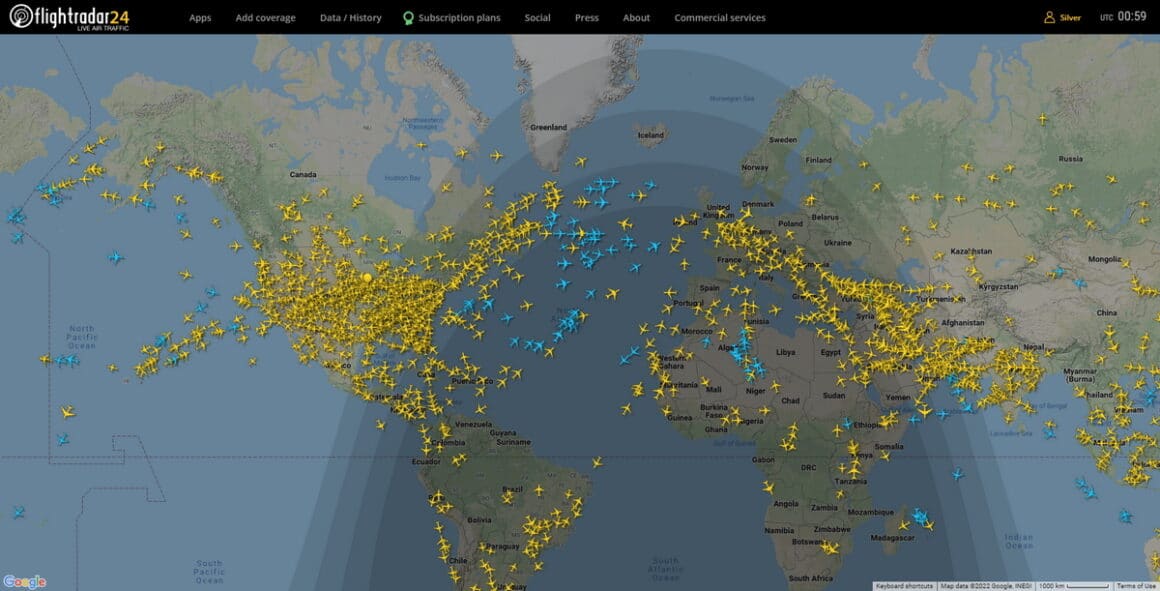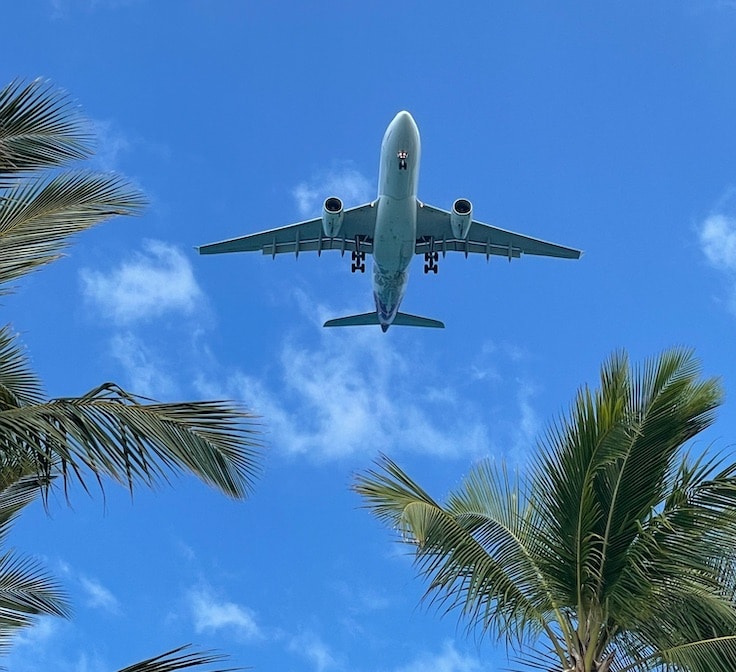The passion for aviation can be enjoyed in many different ways. Some people work on flight crews, ground operations or in other aviation industries. Some people have various aviation hobbies, such as: flying, photography, visiting museums, attending airshows, learning aviation history, and more. But one hobby that includes many aspects of aviation is plane spotting. Plane Spotting can be as simple as going to the airport to watch planes on the weekend to the other extreme of traveling around the world to see, photograph, and log aircraft.
No matter where you are on the plane spotting spectrum, modern software can help you be more informed and aware of where aircraft are located. Below is a listing of 4 applications that can be used to help you find, track, and discover airplanes.
FlightRadar24.com (FR24): The King of Trackers

This site and app is incredibly useful and allows you to quickly track aircraft from around the world from over 20,000 ground-based receivers. FlightRadar24 uses various methods to track aircraft including ADS-B, Multilateration (MLAT), radar and satellite to show aircraft position data (see https://www.flightradar24.com/how-it-works). The program also includes additional information such as: photographs, airline information, speed, squawk codes, altitude and more. FlightRadar24 has a free tier as well as two additional paid tiers (see https://www.flightradar24.com/premium for more information on pricing). The Silver plan is great for most plane spotting needs and removes advertisements that are shown on the free plan.
Pros: works on iOS, Android and web-browsers, very nice interface, powerful aircraft alerts
Cons: does not show blocked aircraft, requires subscription for advanced features, filtering can be difficult
FlightAware: The Nicest App and Service

Next up, is FlightAware, this service has been around for a long time and has the largest reported number (33,000+) of ground stations (see https://flightaware.com/adsb/stats). In addition to showing public information, this company provides data to FBOs and other aviation companies around the world. This service might be one of the more business focused and less AVGeek focused services. But, there is lots of data on this site including photographs and detailed flight information.
Pros: works on iOS, Android and web-browsers, powerful API (requires subscription), community forums
Cons: expensive for advanced features, does not show blocked aircraft, application design is a little dated
ADS-B Exchange: See It All, Even The Blocked Jets

Similar-yet-different than FightRadar24 and FlightAware, ADS-B Exchange is an open service that allows you to view aircraft around the world from over 8,500 ground-based receivers. Since the program allows tracking aircraft without blocking, I tend to use ADSB Exchange more often than I do FlightRadar24 or FlightAware. The map lets you select an area and view aircraft anywhere in the world. There are some powerful filtering features that help you choose the information to see and options to customize the map and aircraft display. Although this is not a dedicated app many developers have integrated into the ADS-B Exchange data feed, including my favorite Android App (ADSB Flight Tracker).
Pros: includes blocked aircraft, no subscription (optional donation), data download and API
Cons: less coverage, basic but functional app interface with sister tool, map can be slightly sluggish
JetTip: Find the rare planes

This is a great mobile application to have on your iOS or Android device. JetTip provides the ability to get notified of unique, diverted, or notable aircraft at selected airports in the United States and Canada. This service costs $5 per month but is worth every penny. There are numerous options to configure that will allow you the ability to fine-tune what notifications you receive.
Pros: helps you not miss an exciting livery or aircraft coming into a nearby airport
Cons: limited to the United States, the app filtering can be a little confusing
Bottom line: Just have fun and use the right tools
Summary: Plane spotting is fun and with the help of these applications you can start to recognize types, airlines, or liveries no matter where you are. The 4 applications mentioned above can be used by beginner or experienced plane spotters. All of these services are free or offer a free trial to get started. Each of the above services has something to offer that will help you become a better spotter. I recommend trying all 4 of these services to see which ones make the most sense for your use. Happy Spotting!
